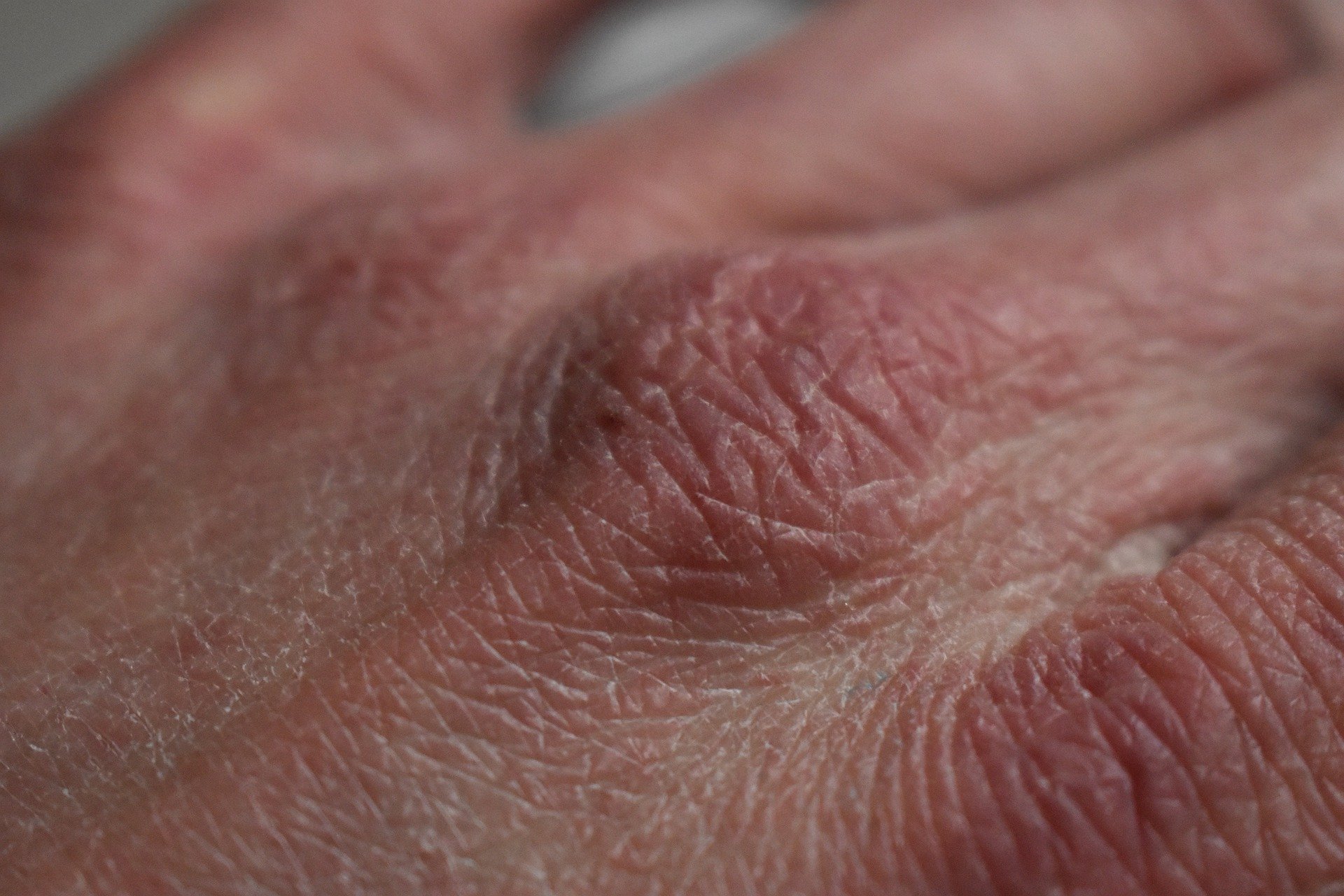
I looked down at my hands to see broken cuticles and patchy skin. The dryness is getting to me. The air is a desiccant that is sucking the life, the moisture right out of me. This parched feeling is starting to catch up with everyone. Fortunately, Ayurveda teaches how to keep skin moist. I know what to do and need to get on it. Now that I am in the vata time of life, cracked nails and cuticles, chapped hands and feet are part of how building vata shows itself in my skin.
The skin is a protective barrier between you and the world. It is a doorway in and out of the body. The condition of the skin reflects what is going on inside. Moist healthy skin supports skin biome health and diversity. A healthy skin biome is a big deal because in addition to protecting the skin, recent research emphasizes the important role skin probiotic organisms play in overall physiology and health.
Ayurveda & The Skin
In Ayurveda, dry skin often indicates a vata imbalance. Vata seasonal effects add to vata in vikruti (current state of inequality or ill health) and your body shows signs including skin symptoms. The six lower layers of the skin are an updhatu of mamsa muscle.
An upadhatu is a sub tissue or product of primary types of tissue that is necessary to support health and life. When you learn to check on your skin, you get a more in-depth look into your inner hydration and the health of your tissues.
The top layer of the skin reflects what is going on with the lymph, rasa. Rasa is the liquid of the immune system and is responsible for distributing immune system soldiers, and trash collection. Rasa thickens and gets sluggish due to dryness and problems show up.
Balance Vata From All Sides To Keep Skin Moist
If your skin feels dry or your client’s skin does, help them balance Vata in a steady, consistent way. Remember the gunas of vata are cold, dry hard irregular and rough. Stay ahead of the gunas of winter to keep skin moist. Address the skin with regular application of warmth and healthy fat.
Add Moisture from The Outside
- Sip water throughout the day. Start with a glass of warm water in the morning, then continue to sip all day long. Add a little lemon for alkalinity and flavor once in a while to keep you drinking.
- Humidify the air where you sleep. Turn on a humidifier before bed or put it on a timer.
- Oil Massage Daily abhyanga (self massage) with warmed sesame oil before or after a shower will warm and moisten your skin
- Each night oil hands & feet lips and nostrils Notice how you wake up feeling.
Keep Moisture Inside
- Wear gloves & socks and a hat when you head out into the cold. Outdoor activity in Vata season can suck the moisture right out of you. Proper protection will help.
- Make sure you have healthy fat in your diet. Fats like organic avocado, ghee, and coconut oil keep the joints and skin lubricated.
- Breathe through your nose when you exercise outside. Breathing through your mouth, evaporates liquid out of your body off the surface of your tongue.
- Wear natural fiber underwear and nighties. Natural organic fibers breathe and keep drying chemicals and toxins away from the skin.
If your skin dries out during the deepest part of winter, these practices will support bringing vata into balance and keep your skin moist and healthy. If you have issues with snot during the winter due to constant weather change, check this article for self-care practices to clear out sinus congestion.
Ayurselfcare’s purpose is to educate on the benefits of Ayurveda. This article is not a substitute for professional medical care, treatment, or advice. All the material here is for learning purposes only. Always share strategy and work with your health care team.
